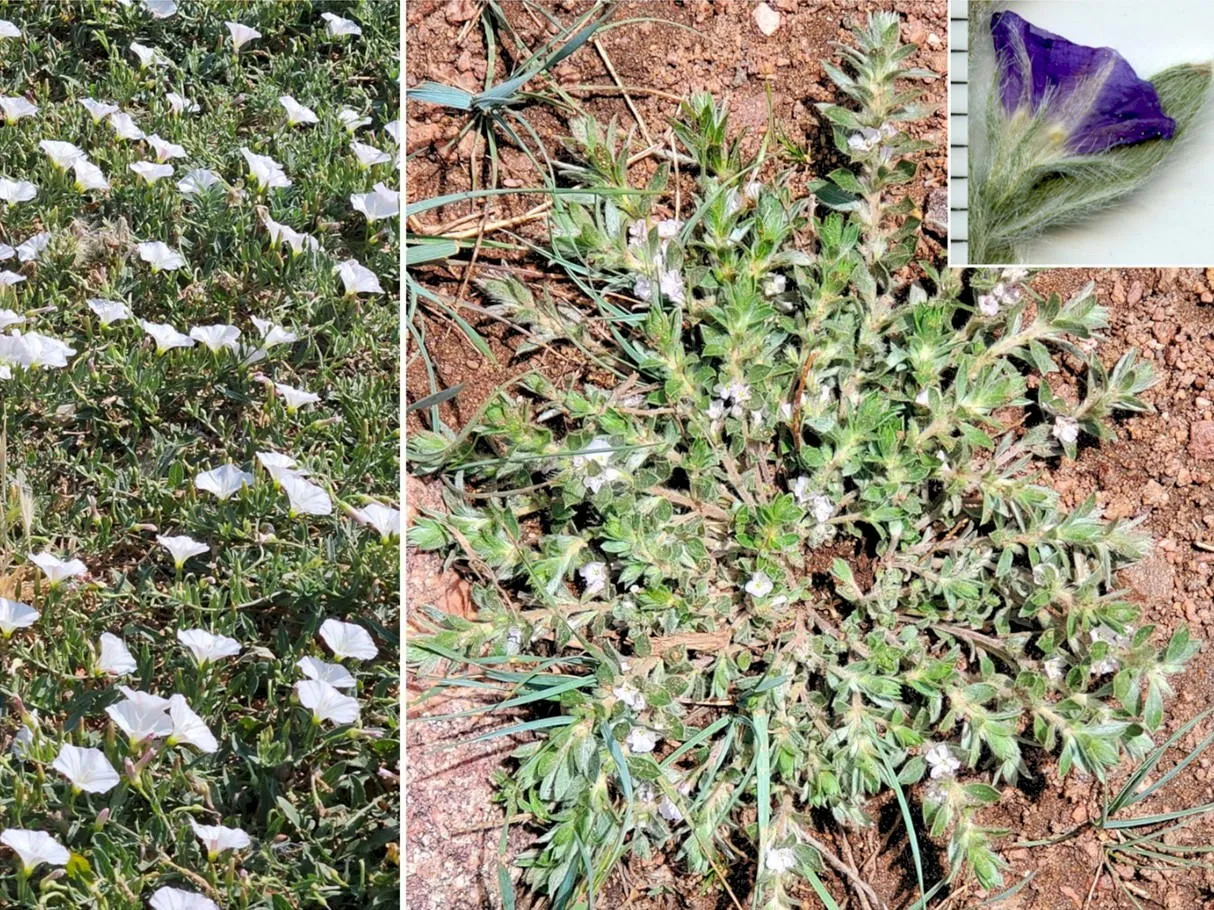By Tom Schweich
There are some pretty, white flowers blooming along Golden’s trails right now … and along Golden’s sidewalks … and in Golden’s lawns.
It is “Field Bindweed” — Convolvulus arvensis L. — a ubiquitous weed in the Morning Glory family that Linnaeus (1753) said was found in European fields. Spreading rapidly with European culture, by 1794 it was reported in New York, and it was in Colorado when our first Flora (book of plants) was published in 1874. Today, it is found nearly world-wide, except in the very far north, such as Greenland.
Field bindweed is a terribly frustrating weed for gardeners, popping up in places where it has never been seen from a very robust root system. It has been declared a Noxious Weed by the Colorado Department of Agriculture. Our county has an information sheet on management and control at: https://www.jeffco.us/DocumentCenter/View/1305/Information-Sheet-on-Field-Bindweed-PDF
There is a bright side, though, to morning glories in Golden. We have a native morning glory called “Shaggy Dwarf Morning Glory” — Evolvulus nuttallianus Roem. & Schult. — seen occasionally in drier areas, such as along the Welch Ditch, in the Survey Field, and on South Table Mountain and Schweich Hill. It is probably also on North Table Mountain; I just have not seen it there. Look in areas of nearly bare soil for a low-growing salad plate-size silvery-hairy plant with ½-inch flowers that are light blue to purple.
Like a lot of our Colorado flora, our plant was first reported by Thomas Nuttall in 1811 on the banks of the Missouri River. Its first name was E. argenteus (meaning “silvery”), published by Frederick Pursh (1814) in his North American Flora. However, the name was previously used for a different plant and therefore an invalid name. Roemer & Schultes (1820) rectified this when they published the 16th edition of Linnaeus' Systema Vegetabilium, publishing a new name of E. nuttalianus after, of course, the name of the original collector, Thomas Nuttall.









